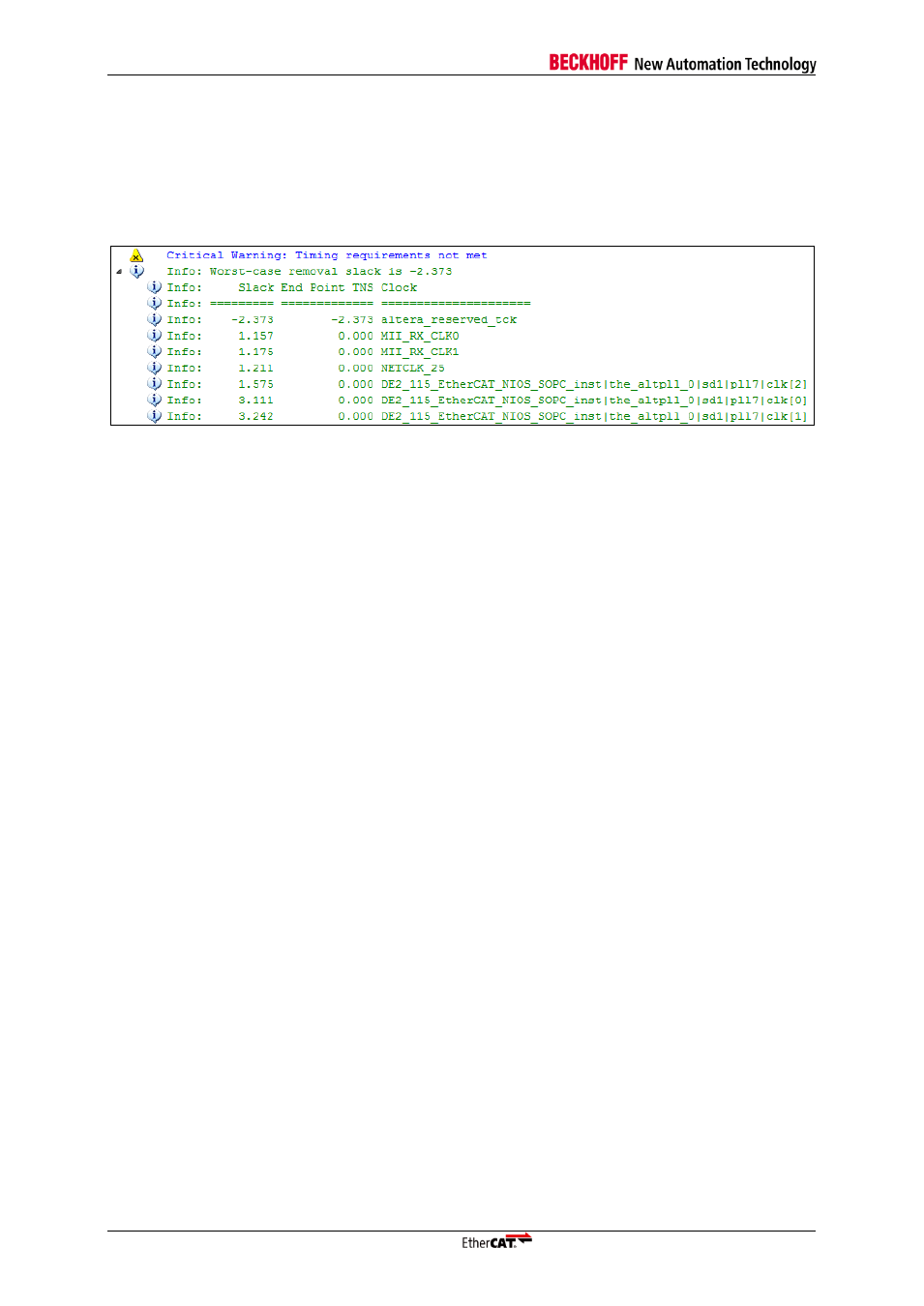5 timing closure issues, 2 general timing closure issues, Timing closure issues – BECKHOFF ET1100 User Manual
Page 30: General timing closure issues

EtherCAT IP Core for Altera FPGAs
26
Slave Controller
– Application Note FAQ
4.2.5
Timing closure issues
4.2.5.1
OpenCore Plus logic does not achieve timing (altera_reserved_tck)
Sometimes timing requirements are not met with OpenCore Plus. Experience shows that timing
violations related to the clock altera_reserved_tck can be ignored. They do not occur with the full
version.
Figure 10: Timing requirement of OpenCore Plus logic not met
4.2.5.2
General timing closure issues
Regarding constraints, we can only give general advice on increasing the synthesis effort. The default
synthesis and implementation features are a good starting point, the following additional options might
increase timing closure:
Analysis & Synthesis Settings
Optimization Technique = Area
Timing-Driven Synthesis = On
Advanced:
Auto Resource Sharing = Off
Remove Duplicate Registers = Off
Compilation Process Settings
– Physical Synthesis Optimizations – Optimize for
performance (physical synthesis)
Perform physical synthesis for combinational logic = On
Perform register retiming = On
Effort level = Normal (or even Extra)
Fitter Settings
Fitter effort = Standard
General advice
Over-constraining was not found useful with current synthesis, it might cause the tools to put too much
effort in paths which would originally pass, and consequently making other paths slower.
Find out if the violating path consists basically of logic or routing delays. If the logic delays are too
high, reduce the number of features, increase optimization effort, or use a faster speed grade.
Generally, the more features are used, the tighter becomes the timing. Especially 64 bit Distributed
Clocks are very demanding, due to the high register count. The low-cost FPGAs are often not able to
use 64 bit DC at all. In many cases using 32 bit DC solves the problem.
If many FPGA resources are available, the design is sometimes spread widely across the FPGA,
resulting in long connections with high routing delay. Reduce the available FPGA resources/area for
the EtherCAT IP Core to improve timing.
Generally, it is impossible to predict timing closure for custom user logic in combination with all IP
Core configurations and FPGA devices. Final certainty can only be reached by implementing the
design
– that is what the evaluation versions are for. There will be combinations which are not able to
reach timing closure at all.
